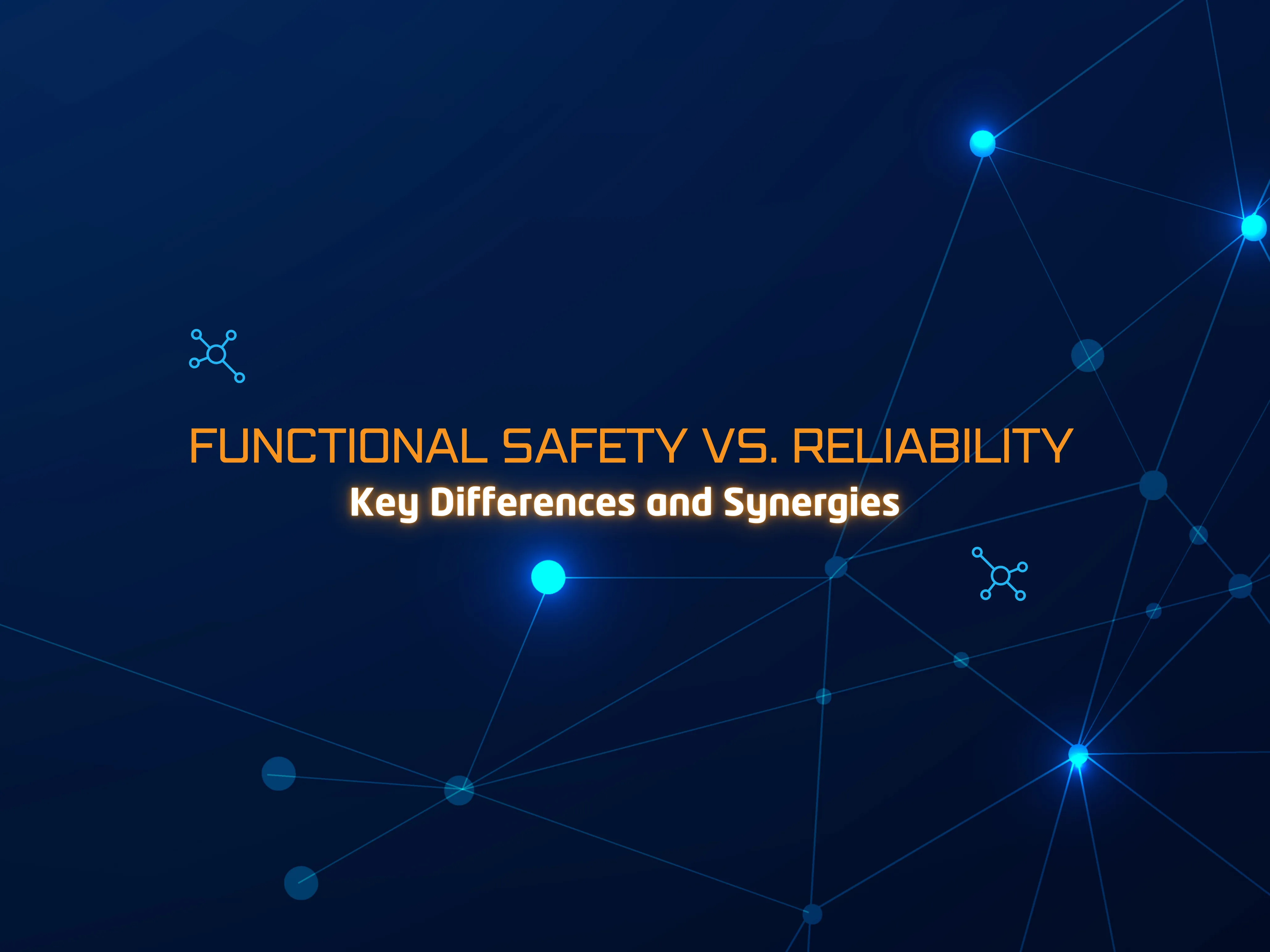Functional Safety vs. Reliability: Key Differences and Synergies
In industries like automotive, aerospace, manufacturing, medical devices, and energy, ensuring the safe and reliable operation of systems is crucial. While functional safety and reliability are often used interchangeably, they are distinct concepts with different focuses. Understanding their differences and how they complement each other is essential for developing robust, safety-critical systems. This article explores the key differences and synergies between functional safety and reliability.
What is Functional Safety?
Functional safety ensures that systems consistently perform safety functions under specified conditions, even in the presence of faults, to prevent accidents or hazards. It is critical in sectors where failure can lead to catastrophic outcomes. Functional safety typically follows structured processes defined by industry-specific standards, such as:
ISO 26262 (Automotive)
IEC 61508 (Industrial Automation)
ISO 13849 (Machinery)
These standards specify the requirements of a safe development lifecycle, including how to assess risks, identify hazards, implement safety mechanisms, and verify that systems meet safety integrity levels (SILs) or performance levels (PLs).
What is Reliability?
Reliability refers to the probability that a system will perform its intended function without failure over a specified period under normal conditions. It measures operational performance, focusing on minimizing unplanned downtime, and ensuring consistent functionality and durability. In the context of safety-critical systems, reliability is vital to ensure that systems remain operational over time and maintain their intended functionality. Reliability engineering involves activities like:
Failure Mode and Effect Analysis (FMEA)
Reliability Block Diagram (RBD) modeling
Root cause analysis
Predictive maintenance
Reliability is often measured in terms of mean time between failures (MTBF) or failure rates, which quantify how long a system can operate without experiencing a fault.
Key Differences Between Functional Safety and Reliability
1. Focus and Scope
Functional Safety: Focuses on ensuring safe action is taken when a fault occurs to prevent hazardous events, even if the safe action causes system downtime.
Reliability: Aims to minimize the likelihood of failure during normal operations, ensuring consistent performance and preventing unexpected downtimes.
2. Failure Modes
Functional Safety: Addresses hazardous failures, like a system failing to respond safely to dangerous conditions (e.g., an autonomous vehicle not stopping for a pedestrian).
Reliability: Focuses on non-hazardous failures that affect system uptime or efficiency without causing catastrophic events (e.g., a power supply failure in a non-critical system).
3. System Behavior During Failure
Functional Safety Ensures the system behaves safely during failure, often with redundancy or fail-safes (e.g., backup braking in a car).
Reliability: Aims for fault-free operation, but if failure occurs, it minimizes impact on performance or uptime (e.g., a redundant component keeping the system running until repair).
4. Standards and Regulatory Framework
Functional Safety: Guided by safety standards like ISO 26262 and IEC 61508, which define requirements, risk assessments, and safety integrity levels (SILs) for safety-critical systems.
Reliability: Governed by standards like MIL-HDBK-217 and IEC 61709, focusing on performance metrics, reliability prediction models, and maintenance strategies for consistent system performance.
Synergies Between Functional Safety and Reliability
Functional safety and reliability focus on different aspects of system performance but should work together for optimal outcomes. Their integration offers several synergies:
1. Complementary Goals
Both ensure proper operation of safety-critical systems—functional safety prevents hazards, while reliability maintains consistent operation over time.
2. Redundancy and Fault Tolerance
Redundancy in both areas, such as fail-safe mechanisms and hot-standby systems, helps reduce failure risks and maintain safety during failure events.
3. Risk Mitigation
Reliability identifies system weaknesses, while functional safety mitigates their impact, providing a more comprehensive risk management approach.
4. Lifecycle Management
Reliability ensures component robustness, and functional safety ensures compliance with safety standards throughout the system’s lifecycle. Predictive maintenance detects potential risks before failures occur.
Best Practices for Integrating Functional Safety and Reliability
1. Collaborative Risk Assessments: Integrating reliability predictions (e.g., MTBF) with functional safety assessments (e.g., hazard analysis) helps address both safety and performance risks.
2. Design for Reliability and Safety: Engineers should consider both functional safety and reliability in system design, using reliable components and incorporating redundancy.
3. Continuous Monitoring and Testing: Regular testing and maintenance of safety and reliability features ensure systems perform as intended without compromising safety.
4. Comprehensive Documentation: Proper documentation of safety and reliability processes ensures compliance, traceability, and supports audits and improvements.
Conclusion
Functional safety and reliability are both crucial for ensuring the performance and safety of critical systems. Functional safety focuses on preventing hazardous situations by ensuring systems respond to faults, while reliability minimizes failure rates and maintains consistent operation. By understanding and combining both principles, engineers can create safe, reliable systems, leading to better outcomes in industries like automotive, aerospace, medical devices, and industrial automation. This integration helps build resilient, robust, and compliant systems that ensure long-term safety and performance.
